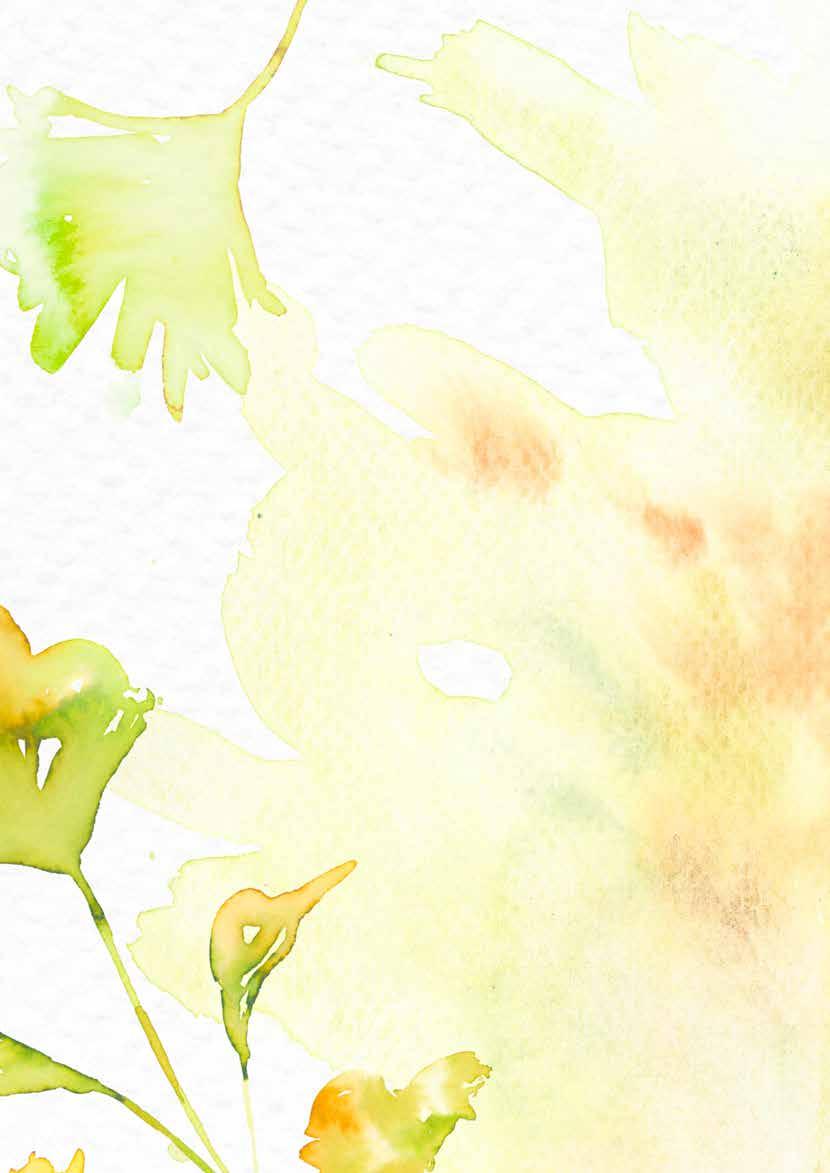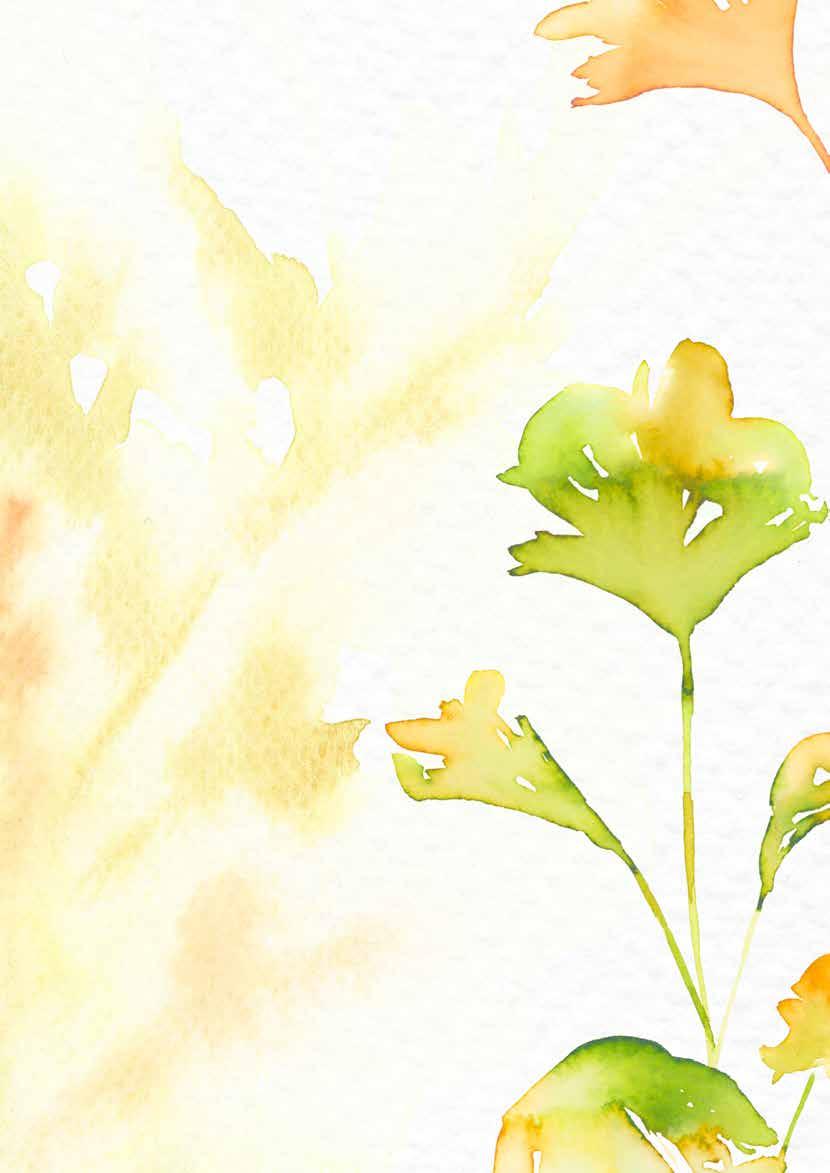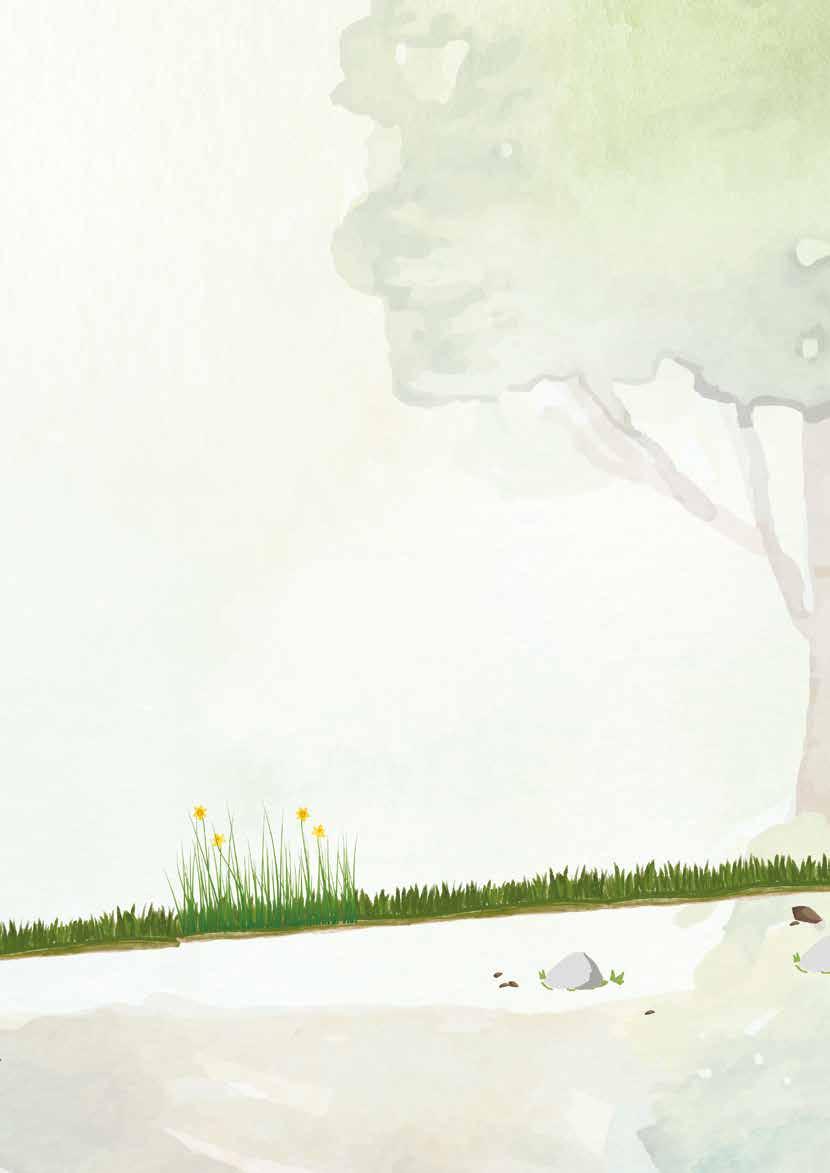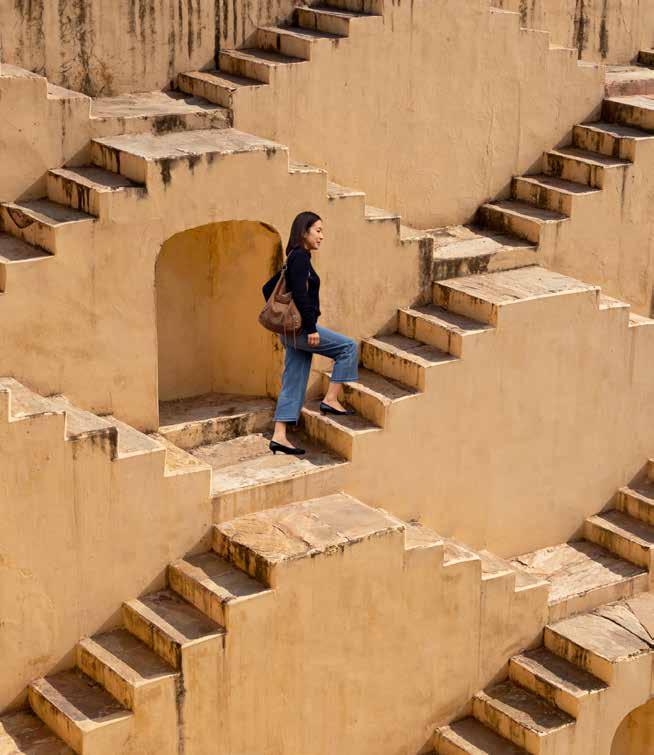Notes from the field: The lives and work of some incredible Indian women


Edition 2023
Editorial Board
Shoko Noda
UNDP Resident Representative
Amrah Ashraf
Head of Communications & Strategic Partnerships
Ankita Bhalla
Communications Officer
James Jose Communications Officer
Parth Joshi Communications Officer
Saudamini Jain Editor Art Direction
Abhir Avasthi
Communications Associate- Branding, Design and Multimedia
Stuti Bajaj and Shilpa Wadhwa: Wishbox Studio
UNDP is the leading United Nations organization fighting to end the injustice of poverty, inequality, and climate change. Working with our broad network of experts and partners in 170 countries, we help nations to build integrated, lasting solutions for people and the planet.
In India, we have been working for over seven decades in almost all areas of human development. Together with the Government of India, we work towards eradicating poverty, reducing inequalities, protecting the planet, enhancing community resilience, and accelerating sustainable development for all.
With projects and programmes in every state and union territory in India, UNDP works with national and subnational governments, and diverse development actors to deliver people-centric results, particularly for the most vulnerable and marginalized communities.
Distribution Partners
Photo Credits
Abhir Avasthi/UNDP India
Deepak Malik/UNDP India
Gaurav Menghaney/UNDP India
Ishan Tankha/UNDP India
Premananda Hessenkamp/UNDP India
Layout Design and Illustrations Cover

Raja Mani/UNDP India
Srishti Bharadwaj/UNDP India
Zishaan A Latif/UNDP India
Marketing and Partnerships
Neha Singh
Strategic Partnerships Specialist

Vidushi Mehrotra
Communications Associate — Strategic Engagements
A young woman from north India.
Photo: Julie-Anne Davies

Contents 06 From the Naga Hills to Beverly Hills 09 Shaping Life through Art 12 Portraits from the Ramp 14 Think Equal 16 Moving Mountains to Leave No One Behind 20 BHUMI PEDNEKAR: “One Act of Kindness can have a Massive Impact, One Act of Courage can Start a Revolution” 22 A Women’s Watchlist 24 The Sound of Change: Using Radio for Climate Action 26 Seasoned Custodian of the Forests 28 PRAJAKTA KOLI: Can Women Save the Planet? 30 Through the Looking Glass 32 FALGUNI and ADWAITA NAYAR: The Story of Ambition in Beauty 34 SUNIL CHHETRI: “My Mom was my First Football Coach” 36 MANASI JOSHI: The Ace Shuttler 38 A Tender Trailblazer 39 UNDP at a Glance
















Foreword by Shoko Noda

Resident Representative, UNDP India

When I started working at UNDP as a gender officer in Tajikistan, I met some of the most exceptional women — national colleagues and community members — who worked hard to occupy and own space in a society that largely shrank womanhood. Their struggles were apparent but so was their determination to take on patriarchy by its horns — for themselves and their families.
This was 25 years ago.
Even today, women are struggling to break the glass ceiling. They remain the face of crises and conflicts. They face rising poverty and violence and continue to be burdened with unpaid care work. When it comes to decision-making, they are relegated to the sidelines.
Gender equality is growing distant. On the current track, it will take humanity 300 years to achieve it. Often in my career, I have wondered, where are the women? Where are they — in board meetings, in corridors of the parliament, in science labs, at work, on panel discussions and in data?
When we started working on the second edition of the Inspiring India magazine, we wanted to showcase stories of exceptional women and give them the space they rightfully deserve. In this edition, we are celebrating India’s women and their indomitable spirit to challenge the status quo, shatter stereotypes and make change happen. We are celebrating their contribution to end the pandemic, to raise their voices against climate change and to run successful careers.
We are privileged to have a special message from the honourable President of India, Smt Droupadi Murmu. Her life, service and success are an inspiration for all Indians and beyond.
In the pages that follow, you will meet Jesmina Zeliang, who started a small business and now employs around 450 women to put Naga weaves on the world map. You will meet Bhumi Pednekar, an Indian actor and UNDP India’s national advocate for the SDGs, who is challenging gender stereotypes in films with her pathbreaking roles.
You will read stories of ecofeminists — young and old — who are mobilizing their communities to protect our planet. We have Prajakta Koli, our firstever youth climate champion, who is using her voice for urgent climate action.
You will meet Arjuna Award winner and parabadminton champion, Manasi Joshi, whose accident didn’t break her spirit or her will to win medals for India.
We have India’s football team captain and a proud feminist, Sunil Chhetri, who has advocated for equal pay for women in sports. And we have Rudrani Chettri, a transgender activist who runs a trans modelling agency to open conversations on gender identity expressions.
We are proud to have the founders of Nykaa, billionaire businesswomen and mother-daughter duo, Falguni and Adwaita Nayar.
You will also meet some of India’s frontline workers who, armed with CoWIN, have been leading the charge against the COVID-19 pandemic. There is also a heart-warming story of how Warli artisans are protecting the dying tribal artform.
I am delighted to introduce you to some of India’s countless inspirational women and their stories. I hope you will enjoy reading our magazine.
Inspiring India | 03


 Smt. Droupadi Murmu President of India
Smt. Droupadi Murmu President of India


Inspiring India | 05
From the Naga Hills to Beverly Hills



MORE THAN 450 women across Nagaland weave textiles for people all over the world. In between chores at home or in groups, they wear ancient handheld looms around their waists and bend forward and backwards to weave traditional Naga patterns on natural fibres.






In varying colours and arrangements, the women weave in stripes, straight lines, squares and lozenges, on different materials. They make cotton throws, bamboo scarves, eri silk shawls and other items for Heirloom Naga, a home decor and fashion brand.

Heirloom Naga was founded by Jesmina Zeliang in 1992.
In Dimapur, Zeliang, then 27, would watch her neighbour Sangsiliu Chawang, then 19, weaving on the verandah. Zeliang, at the time, had no plans to start a business. But one day, as Chawang was busy weaving a festive shawl for herself, Zeliang had an idea. “I asked her if she wanted to try something new and she was game for it,” Zeliang says. She gave Chawang a sample cushion cover and asked her to weave something similar. Soon, she was able to build a small collection of soft furnishing, which were “so outstanding and so novel,” she says, that it turned into a business.

Women across Nagaland weave shawls and skirts for their families (weaving is taboo for men) using what is probably the oldest kind of loom in the world: the backstrap or the loin loom. It’s a simple contraption, made essentially of bamboo rods, as wide as a pillow, with a thick belt fixed on one end to be worn by the weaver.
Weavers sit on the ground or small stools with their legs stretched out and the belt wrapped around their waists. At home, the other end of the loom can be fastened to a pole or railing attached to a wall. But many set up their looms on wooden handloom units, which look like desksized easels. The yarns are stretched between the parallel bamboo rods of the loom and the weaver adjusts the tension of the warp by bending her body.
“I am still fascinated withthe fact that out of such a primitive loom, such beautiful products can be woven. It was my ambition to showcase these products to people outside the state,” Zeliang says.


Inspiring India | 07
HEIRLOOM NAGA
Heirloom Naga now exports to high-end stores and boutiques in over 30 countries. Some of their clients include international brands such as Anthropologie, Crate & Barrel and Roost.





It was a difficult proposition in the early 90s when sustainability wasn’t yet in vogue, Zeliang says, “to make clients understand why the product was so expensive. I had to take on the role of an educator and a storyteller.”
Naga weaving is intense, time-consuming and almost quite literally back-breaking work. As the weaver repeatedly moves her body, she must also carefully and expertly weave in the patterns by hand. The width of the loom, worn on her body, is limited by her waist, so it can produce only narrow pieces of cloth which are then hand-stitched to make wider fabric.

But it is less intensive than agricultural work, the mainstay of Nagaland. Women’s participation in the state’s labour force is higher than the national average. The 2011 Census showed that in rural Nagaland, more than half the workers are women. The state government’s Annual Administrative Report 2020-2021 noted that 65.2% of
working women in the state are cultivators and 7.3% are agricultural labourers. Among men, only 47.4% are cultivators and 5.8% are labourers.
Farm labour is typically a low-paying activity. But the weavers at Heirloom Naga are able to earn up to ₹25,000 ($312) per month. Zeliang factors in domestic commitments of her weavers. It helps that the backstrap loom can be rolled up and easily carried around, so weavers can work at home, in groups or at clusters set up by Heirloom Naga.


Chawang, now 51, supervises the work at one such cluster in Samziuram, a village in Jalukie. Her income helped her educate her children and, she says, she was particularly proud to impart her weaving skills to her two daughters because Zeliang has turned weaving, a traditionally unpaid domestic activity, into a source of income.
“It’s a universal truth that women in business employ more women,” Zeliang says. “Women everywhere need to be financially empowered. Only then will our voices be heard, only then will we find a seat on the table,” she adds.
Shaping Life through Art





IN A CORNER of her one-room house, on a single bed next to a large window, Sidhhi Surendra Jadhav, a 33-year-old anganwadi teacher, sits cross-legged in front of a laminated table with her art supplies. She dips a brush in white paint and draws on red ceramic cups, her brows furrowed in concentration.

In Jadhav’s neighbourhood, in the narrow lanes of Chane and Jirka in Ambawadi Gram Panchayat, about 100 kms from Mumbai, it’s common to see women painting behind curtains fluttering in the doorways. Sometimes, spread out on the floor in groups, they draw shapes — triangles, circles, squares and straight lines — with such precision it looks like a geometry lesson.
But they’re practicing a tribal art form at least a thousand years old. Warli painting, named after the region along the border of Maharashtra and Gujarat, is believed to have originated in the 10th century. Traditionally, women used rice paste to decorate their red mud houses with scenes of everyday life and nature.

Inspiring India | 09
UNDP and Larsen & Toubro Infotech have been leading an initiative to draw on this indigenous women’s art form to empower underprivileged women in the outskirts of Mumbai and Thane, areas inhabited predominantly by tribal and other vulnerable communities. Under the Women Artisans Skills Enhancement Project (WASEP), women were trained in Warli and provided platforms to sell their handcrafted products. The women, primarily homemakers, were also trained in entrepreneurship and marketing.
WASEP was launched in 2017 but Jadhav and her neighbours heard about it when COVID-19 hit. They joined promptly but with apprehensions. “We were unsure of what it would entail,” she says.
During the COVID-19 lockdown, more than 100 million Indians lost their jobs, according to estimates from the Centre for Monitoring Indian Economy. Daily-wage earners were hit the worst.
Jadhav’s husband, a salesman who earned commissions, could not work during the lockdown. The family struggled to stay afloat on her small salary, their expenses were adding up. “We had to pay children’s school fees and regularly recharge mobile phones for their online classes,” she says.
Most women who joined the initiative had never practiced Warli before. “I had never thought a traditional art form, which I only heard until then, could help me become financially independent,” says Nutan Nitin Boyer, 35.


Over a month, the women were trained in batches of 25. They first worked on cloth masks and branched out to all kinds of objects: cups, notebooks, pouches, jewellery, sarees… a wall at Shivaji Park, the iconic cricket ground in Mumbai.
The shapes in Warli depict forces of nature. Circles represent the sun and the moon, triangles are mountains and trees, a combination of shapes are used to draw stick figures. The people in the paintings are often drawn in slanted lines because they’re usually in motion — dancing, working, engaged in everyday tasks and rituals.

“In the beginning, our hands would tremble, and we were amused by how we were drawing the figures,” says Jadhav.
The project has trained 2,500 women so far. Many of them report feeling an increase in their self-confidence and a profound shift in the way they view themselves.
“My dream of being a working women came true due to WASEP,” says Swara Sachin Yadav, 30. She has been saving up “to buy something which I can remember for life,” she says. That’s what Boyer had done. She bought a saree with her first earnings. “It felt so satisfying not to ask for money from anyone,” she says.
On an average, the women earn around 1,200 ($15) every month — but go 12,000 ($150). According to government estimates, more than five million women work in the handicraft sector. Small enterprises can be set up with minimal investment, the work can easily be, and in many cases is, home-based. WASEP has been able to tap into this potential.

Jadhav, who earns between ₹1,500-2,000 ($19-25) per month, is planning her next step: an exclusive Warli clothing line. “Initially, when I would search online for Warli clothes, I always thought it was expensive, but now when I am doing it, I feel the price is justified. It requires hard work and smart work,” she laughs.

Inspiring India | 11
Portraits from the Ramp
WE ARE NOT giving up,” says Rudrani Chettri, a transgender activist based in New Delhi. “We do not want anything more than what a cisgender heterosexual person is getting. We won’t settle for anything less. That is equality for me,” she says.

Chettri, who is also a model and actor, founded Bold, India’s first modelling agency for transgender people, in 2015. But it has been challenging to find work. “A person once told me I was doing a fabulous job, but her clients were not ready for trans models,” she says.
The 2011 Census estimated that 488,000 Indians identified as transgender. It’s a conservative number because there’s a strong likelihood that many transgender people would not come out to a Census official.



Chettri started Bold to gain visibility and subvert prejudice. “Why do we have to go through the traditional mode to advocate our cause?” The agency operates out of the premises of Mitr Trust, a community-based organization and shelter Chettri runs in Sitapuri in south-west Delhi. It took six months to find a building to rent because most landlords didn’t want to lease their properties to transgender people. It took another year for people in the locality to understand that they aren’t criminal or evil, Chettri says.
A 2017 National Human Rights Commission (NHRC) report found that 92% of transgender people are deprived of the right to participate in any form of economic activity in India. It also showed that many discontinue their studies as they are bullied by classmates and teachers. Even with qualifications, the study found, they are refused employment or compelled to resort to begging or sex work.
These findings are reflected in the stories of the models at Bold. Titli was studying to be a nurse in Jharkhand. She was bullied for years and when she could no longer bear it, she dropped out. When a friend told her about Chettri, Titli packed her bags and moved to Delhi. In addition to modelling, she has been polishing her soft skills and exploring other career opportunities.
 Titli Deepika
Titli Deepika
Many are Delhi locals and were forced to leave their homes. Deepika was ridiculed in and out of her family home so she became a commercial sex worker to support herself until she found Mitr. Anjali says the ridicule got worse when she grew out her hair and began dressing as a woman. Bella, who works closely with Chettri, left because her family was forcing her to live a “normal” life.

Only 2% transgender people live with their parents, according to the NHRC study. “My father used to scare me into drinking milk by pointing at trans people, saying, ‘if you don’t drink your milk, they will take you away.’ If I was a cis person, I would have grown up to become transphobic,” Chettri says.
But she has been celebrating a shift in the entertainment industry. Films used to portray trans characters as objects of mockery, their identity “used to evoke laughs,” or show them “like an evil person or… an ugly person,” she says. But in 2019, she found a prominent role in The Last Colour, a film about widows, which was critically acclaimed.
Since then, she has met a lot of people in the industry who had never interacted with a transgender person. But, she says, “Now that they know about me, if they have transgenders in their script, they call me up.’ So there is some kind of consultation. A lot of upcoming films are talking about trans people and their suffering, and why they can’t find jobs and even when they have jobs, what makes them leave.”

The answer, she believes, is through dialogue, especially with the perpetrators of violence. “I was beaten by a policeman when I was out celebrating the New Year...

I was attacked by nine boys a few years back...” But, she adds, “If we only engage with people who are sensitive to the community, like development partners, then our message will remain restricted to a few.”

Inspiring India | 13
Anjali



Inspiring India | 15 - Anjali Mehta
Moving Mountains to Leave No One Behind


THE MOST COMMON reason for Deepa being late to work is a wild animal. The young healthcare worker has been interrupted by cobras, bison and other creatures just as formidable. When she encounters one, she stands very still until it moves out of her path.


Once a week, she slings a vaccine carrier box over her shoulder and traverses through the rocky, muddy terrain of villages on the banks of the Sharavathi backwaters in Shimoga, a lush district in Karnataka, tucked between the Arabian Sea and the Western Ghats. She walks to houses scattered across the 12-km area of this remote rural settlement to inoculate women and children against preventable diseases. And for the last two years, to administer COVID-19 vaccines.
these winding roads. A healthcare worker like me is the first point of contact for many of these villagers,” she says.
Off the winding road, Deepa climbs down a narrow, slippery path made of stones wedged into the stepped farmland, and walks to a small house. It’s a sunny day but the weather here is temperamental. Still, Deepa takes her time to make small talk with the family — a farmer and his wife, their teenaged daughter and his elderly parents. As she unpacks the vaccine container, she enquires about their health, they talk about the pandemic and she administers their COVID-19 booster doses.

India’s immunization programme rests on the robust shoulders of 250,000 ANMs who reach out to the farthest, most outlying, of the 29 million pregnant women and 26.7 million newborns vaccinated every year. During the pandemic, ANMs worked tirelessly to administer COVID-19 vaccines across the country.
ANMs are an integral part of India’s immunization programme, which is supported by eVIN (the electronic vaccine intelligence network — a vaccine management system implemented by the Ministry of Health and Family Welfare with support from UNDP.



Inspiring India | 17
eVIN’s smart interface tracks vaccine stocks, monitors and manages temperatures across cold-chain storage points, and has revolutionized the way vaccines are distributed to the last mile. In 2020, it was repurposed into CoWIN (Winning over COVID), the digital backbone of India’s COVID-19 vaccination drive.












“I always wanted to make a career in healthcare,” Deepa says, but “for women like me, it’s not easy.”

It takes her over two hours to reach Tumuri. First, she takes a shared jeep to the banks of the river. Then, she embarks on a large ferry, which transports people and vehicles across the river. Finally, she climbs back into the jeep to reach the primary health centre 30 minutes away.

She began working in 2019 and moved into the government quarters in Tumuri. On weekends, she would go home to Sagar, the closest city, where her parents lived. She married a cloth trader soon after. But then, she says, “I faced a lot of pressure from family members to leave my job and take care of the house.”
According to the World Bank, the number of working women in India dropped from 26% in 2010 to 19% in 2020.

“I was firm in my belief that this was something I wanted to do,” says Deepa.


This has meant making huge sacrifices. She continues to live in Tumuri during the week — a difficult decision especially as she has a twoyear-old at home in Sagar.
Her husband visits her sometimes but she sees her son, who is being raised by her mother, only on weekends. She thinks it’s worth the effort.
“It is difficult staying away from family, especially my child,” she says, but, “taking care of a community’s health needs, helping to protect the lives of infants is a big motivating factor.”


When it starts to drizzle, Deepa, unperturbed, pulls out an umbrella, side-steps a puddle and with two fellow ANMs who have joined her, makes her way to the next house, about half a kilometer away.

Inspiring India | 19
“One Act of Kindness can have a Massive Impact, One Act of Courage can Start a Revolution”
Shoko Noda: After your father passed away, your mother raised you and your sister. How did it impact you?

Bhumi Pednekar: My sister and I are a product of parents who were both feminists. Gender didn’t decide our fate in our family. My mother had always worked and I feel my ambition and drive have a lot to do with that. After my father passed away, she single-handedly took over everything. It was not just about financial responsibilities but also the emotional responsibilities of two grieving teenaged daughters, and in a society where you are constantly mansplained. I come from a family of people who take traditional routes of education. They would tell my mother, “now that you have lost the protector of the house, don’t let your daughters try to achieve unconventional dreams.” But my mother stood rock solid for me and my sister. She has been such a fantastic role model… I hope to, someday, be one for my child as well.

Shoko: You also pick roles that are unconventional. What motivates you to be a frontier in that area?
Bhumi: My first film made me realize I could make an impact through cinema. Dum Laga ke Haisha (2015) spoke of body shaming and the character I played was so inspiring, she inspires me as well. There are a lot of perks of being an actor: great clothes, money, and love from the audience. If I don’t reciprocate by doing films that have a positive impact on society then I would think I have failed. Obviously I don’t want my films to be preachy, but I would like the audiences to go back with a thought that provokes them to think about what they are doing to make the world a better place.
Shoko: It’s true that your films have inspired us to think about social issues. Even before coming to India, I had heard about Toilet (2017). But it must be challenging to prepare for such roles.
Bhumi: The preparation is quite intensive but I love taking on the challenge. When I did Toilet: Ek Prem Katha, where I play a girl who does not have access to a bathroom when she gets married, I hadn’t realized the problem was so big and that it leads
Bhumi Pednekar
to violence against women. I learnt much of this while preparing for the film, so I am very lucky that the character provided me with the opportunity to evolve. Sonchiriya (2019), which speaks about gender inequality, is set in the 1970s and it made me think, oh my god, it has been 40 years and we have not really come far as a society! That’s when you realize, we need more people championing the cause.
My preparation involves a lot of reading, a lot of research about the women of that era or area and their challenges.
Shoko: While you’re learning about and addressing women’s experiences outside your social context, you also speak up about issues such as gender pay gap within Bollywood.

Bhumi: Absolutely! Gender inequality is everywhere. There were times I was offered 5% of what my male counterpart would get, even when we had achieved
the same, worked for the same number of years. There is this notion that “he deserves more” and that breaks my heart. When I started, I was scared of saying no. But through the years, my characters have empowered me to become a stronger person, someone who stands for her rights.
Shoko: We feel privileged to work with someone as committed to gender as you are. What message would you like to share?
Bhumi: It is not a fight only for women, it’s a fight to be inclusive of all genders. I want to tell young women that people will try to intimidate you, opportunities will be snatched away, but you need to find the courage to fight. Be strong, hold each other’s hands, try and uplift as many people as you can in your ecosystem. One act of kindness can have a massive impact, one act of courage can start a revolution.

(This interview has been condensed and edited for clarity.)

Inspiring India | 21
A Women’s Watchlist

Good cinema makes you participate in the narrative. It doesn’t simply entertain but taps into the depths of our innermost feelings of love and fear.
A film really clicks for me when it makes me feel seen, especially when it gives me the validation that my experiences as a woman in this world matter. So here’s a selection of five powerful stories about women that left a mark on me:


1. Trial By Fire (2023) - Netflix
This miniseries is based on the 1997 Uphaar cinema fire, which killed 59 people in New Delhi. For me, the heart of the series is Neelam Krishnamoorthy (played by Rajshri Deshpande), a mother grieving the loss of her two children in the man-made tragedy, while fighting the system with the unremitting resistance of a woman. The show dives deep into the divisions of class, caste and gender, and explores each issue with care and compassion. It makes you realize how much harder a woman must work and push back to


2. Petite Maman (2021) – MUBI
Petite Maman translates literally as “Little Mama” and in this almost dreamlike film, Celine Sciamma explores the loneliness of women through a 9-year-old. Nelly, an only child, creates imaginary worlds to find everyday solace, as her loving but mostly absent mother works hard. One day, she opens a magical portal and makes a friend, a girl who shares a striking resemblance to her. Like in her subliminal work Portrait of a Lady on Fire, Sciamma’s female protagonists find joy in one another in this film.
A prominent film critic known for her easy-to-digest takes on films and popular culture that she views through a lens of modern sensibilities on her YouTube channel.
Sucharita Tyagi
3. Shiva Baby (2020) – MUBI
Shiva Baby’s incredible screenplay is almost a mystery thriller in real time, one mishap seamlessly blending into the other. Most of this movie plays out at a Jewish funeral service where Danielle (played and created in her own image by Canadian writerdirector Emma Seligman), an awkward, bisexual, college student, juggles and dodges her parents, sugar daddy and overachieving ex-girlfriend. The film explores sexuality, the messiness of sex and families with a refreshingly light touch. Its comedic treatment never crosses into slapstick.

5. Feminists: What Were They Thinking (2018) - Netflix

This documentary is a crash course in the second wave of feminism, which began in the 1960s, in America. Women were taking to the streets chanting “the personal is political” and artists had joined the feminist cause. Featuring a female director, producer, music composer, editor and cinematographer, it is an abridged telling of the two decades of the women’s rights movement. In this documentary, you will meet some INCREDIBLE creative professionals globally famous through their work, like actors Jane Fonda and Lily Tomlin, singer Michelle Williams and artist Judy Chicago.
4. Little Women (2019) – Available to rent on multiple platforms

Unlike other adaptations of this Louisa May Alcott novel, Greta Gerwig’s Jo (played by Saoirse Ronan) is a mix of the character Alcott wrote and Gerwig herself. The movie a great reminder of how there isn’t just one way to be a woman and that we aren’t simply a collective group. Gerwig reimagines this 1868 novel with her contemporary sensibilities, while still keeping it a period piece.

Inspiring India | 23
A village in Madhya Pradesh switched to organic farming by listening to a 27-year-old radio jockey. And more than 100 villages, she says, have been inspired to start.


On a hazy winter morning, as the Betwa gently flows through the town, Varsha Raikwar makes her way to the studio. She settles down at the console and goes over her show notes. Climate action is a radio dial away. She takes a few sips of water, puts on her headphones and flicks the dials to start recording an episode on water harvesting solutions to protect against droughts.
Raikwar hosts Shubh Kal, a daily show on 90.4 FM Radio Bundelkhand, a community radio station broadcasting to over 500,000 people in 200 villages across Jhansi, Datia, Niwari and Tikamgarh. Raikwar engages with villagers on climate change through local news reports, stories and folk songs.
Raikwar comes from a family of farmers in a village called Niwari. She grew up watching climate change affect their livelihood. “When I was about 8-9 years old, I started noticing how our crop output was declining. My father had to look for other jobs to make ends meet. Almost everyone was affected in our village. But when I asked the elders why this was happening, they would simply call it an ‘act of god.’ I was not convinced with this answer,” she says.
The Sound of Change: Using Radio for Climate Action
So she decided to investigate and discovered that the problem was climate change. “What surprised me was how little my people knew about climate change. [I thought] if we could sensitize them, they would be better prepared to deal with any crisis,” she says.
In 2017, Raikwar joined Radio Bundelkhand to spread awareness and has since engaged more than 10,000 community members on climaterelated issues. They started a reality show called Kaun Banega Shubhkal Leader (Who Will Be A Good Leader) featuring 140 locals working to protect their natural environment. Community engagement programmes can be difficult to sustain, but by identifying regional climate champions and mentoring them to become agents of change, Raikwar and her colleagues have ensured that the conversation around climate change continues.
It is unusual, in her community, for a young woman to move away from her family home.
“I was the first woman from my family to move out of the village, and there were a lot of challenges.” Her parents, although apprehensive at first, supported her decision. But, she says, “other people in the community started talking about how it was not appropriate for a young woman to go out and work late hours. Travelling alone to work, I could be subject to eve teasing,” she says. But a sense of purpose kept her going. “I kept telling myself that I must be brave. I was doing something that was good for my people, and good for mother earth,” she says.
Radio Bundelkhand was started in 2008 as a platform to discuss development issues in the region. It hosts shows on the environment in different, sometimes delightful, formats.


“We noticed that women in villages are becoming vocal about important issues and can positively influence people, so we developed a character called Bairo Bhauji, a young woman who engages with people in her community on climate issues. We made her talk in the local dialect and in a light-hearted way so that people can relate with her,” says Raikwar.

As a young changemaker, Raikwar has her hands full being involved in identifying key issues to talk about and coming up with new ideas to engage communities. Her favourite part of her job is reporting. She most enjoys going to villages to get first-hand accounts of how farmers are dealing with climate change on the ground. “It is so inspiring to see the never-saydie spirit of our farmers. They are always finding new solutions to deal with challenges,” she says. Climate change is not just an environmental issue. It is also a gender issue. “Women in our villages are more dependent on natural resources, so when climate change affects our forests and farms, they end up suffering more. During droughts, men migrate to cities for work,
and it is the women who are left to fend for themselves and the children,” Raikwar says. She believes that climate action must be led by women and girls at the forefront.
When she was in Class 8, Raikwar met a friend who worked in radio and was filled with awe. She loved listening to the radio but hadn’t, until then, even considered the possibility of working there. Today, she is Radio Bundelkhand’s only female radio jockey. But she hopes that other young women are inspired to join like she was. “If I can create more women radio jockeys like me to take this movement forward, then it will be my biggest accomplishment,” she says.
Inspiring India | 25
Seasoned Custodian of the Forests


For 25 years now, Jamuna Tudu has been taking on the jungle mafia of Jharkhand. The 42-yearold has built an army of 10,000 women, armed with bamboo sticks, spears, and bows and arrows, who patrol the forests. For this, she is lovingly called Lady Tarzan by the locals. In 2019, the government awarded her the Padma Shri, India’s fourth-highest civilian award, for social work.

“Growing up, we used to help our father in his farm. I was fascinated by watching the plants grow and used to love playing with animals. Nature was an integral part of our lives,” says Tudu.




















































So when she moved from Odisha to Muturkham in Jharkhand, 100 kms away, Tudu was shocked looking at the rampant deforestation. The day after her wedding, her in-laws took her to











































She found herself surrounded by tree stumps. She resolved to do something about it.
Tudu and four other women confronted the timber mafia who had been illegally felling the sal and teak trees. “Many villagers shared my concern, but very few came forward to support us, either because of the fear of the mafia or social boundaries that women were subject to,” she says. The five women formed the Van

Suraksha Samiti (Forest Protection Council) in 1998. They would go into the forest to keep vigil and openly challenge the mafia. The mafia responded with physical violence and death threats.





But that did not stop them. “Slowly, other members of the community also came forward,” says Tudu. Since then, she has helped create and strengthen over 400 such forest protection councils.




In addition to patrolling, even at night, they undertake plantation drives to restore degraded forest areas. The councils are also a medium to liberate women from oppressive social constructs. “If women rise up, the entire village will wake up,” Tudu believes.
She has inspired women in Muturkham to plant 18 trees when a girl is born and 10 when a woman gets married.
It’s the love and reverence for nature, which she learned from her father, that drives her. “Even today, I make time to go to the forest… I believe that since all of us benefit from nature in some form, all of us also have a responsibility to take action, in whatever capacity we can,” she says.

Inspiring India | 27
Prajakta Koli

Climate change is an overwhelming thought: the floods in Mumbai, the pollution in Delhi, heatwaves everywhere, and the messiness of our cities... all worsening every year.
The environmental crisis unfolding around me used to make me feel helpless. I didn’t know what I, alone, could possibly do to make any difference.
But last year, as UNDP India’s Youth Climate Champion, I met women who have dedicated their lives to protect the ecosystem. They have changed the way I see the world.

It began with a boat ride an hour north of Goa.
Vengurla, a lush town on the Konkan coastline, is surrounded by dense mangrove forests. With thick roots visible above the ground, mangrove trees look powerful. And they are. They
can capture very high rates of carbon and help reduce greenhouse gases. They’re a way to tackle the climate crisis.
Mangroves are spread across Maharashtra. In Vengurla in Sindhudurg, the state’s southernmost district, a women’s self-help group is trying to protect them through ecotourism. The Swamini Bachat Mahila Gat organizes mangrove safaris on the Mandvi creek to impart the traditional knowledge of the forest to visitors.
I went on the safari with the group’s founder Shweta Hule who pointed out to me the different kinds of mangroves and their importance. I looked at the roots and branches of the trees in wonder as I learned about how they suck carbon dioxide and store it in the soil, so it can stay there after they die instead of being released back into the environment.
The women also told me about mangrove species that have medicinal uses — a poisonous one can cause temporary blindness, but its thorns boiled in water can help treat asthma and pneumonia.
In addition to teaching outsiders like me about mangroves, ecotourism has helped women and other locals supplement their income. In the tourist season of 2019-2020, despite being cut short by the pandemic, the group made close to ₹200,000 ($2,500) from mangrove safaris alone. The initiative has also introduced locals to information about preservation.

Over the last year, I have heard about women in different parts of the country working to ave our Mother Earth from the increasing challenge of climate change.
Closer home, in Chembur, I met the Safai Saathis. This women’s group is committed to reducing the

impact of plastic waste in Mumbai. Sushila Sable, group’s president, began collecting and segregating waste when she was 10. A drought in Marathwada in 1972 had forced her family to move to Mumbai for work. They often wondered, she told me, “Is it our destiny to just segregate waste and sell it for a living?” But then, in the late-1990s, an NGO trained them in waste management and recycling and helped them form a federation of women waste pickers linking them to government schemes. “They made us realize the importance of our work for nature,” she told me.
The Safai Saathis said their jobs would become significantly easier and safer if people segregated their wet and dry waste at home.

My family and I have been doing just that. We have a compost bin for our kitchen waste. It’s how my mother’s 120 children, sorry, I mean, plants, are thriving.
Since meeting women on the ground, I have been thinking deeply about the environment and trying to make cleaner and greener choices every day. I carry disposable bamboo cutlery in my bag, so I don’t have to use plastic when getting take-out. I carry my own water bottle. I check labels for sustainable products when I shop.
And I have been using my social media outreach to amplify stories of climate change and voices of environmental changemakers. It is a call to action because if we all incorporate small changes, we can make a big difference! We need the planet to heal in our lifetimes. It’s personal, and it is possible.

We are the solution.
Koli is a content creator and actor, popularly known as MostlySane online.
Inspiring India | 29
Pushta Pawar, 25, is a forest guard at the Sudasari desert national park in the Thar desert. She oversees the area to protect the critically-endangered Great Indian bustard and ensures there’s enough water for the bird. While most girls in her village of Balad, near Pokharan, are married off before they turn 18, she was determined to first be financially independent.

Football is very popular in West Bengal. But social norms keep women indoors. So girls playing football is a small act of defiance. Khushnumah, 15, says, “Neighborhood aunties used to mock us for wearing shorts to the camp. They questioned our need to learn a sport meant for boys. Finally, my mother protested, she said, girls and boys are equal.”


Through the Looking Glass
Stories of women subverting their circumstances as seen by some of India’s top women photographers
Photo: Paromita Chatterjee
Twelve female cadets of the Indian Naval Academy at Ernakulam in Kerala. These “women with anchors” have chosen a career not many would dare to. They train with 1,200 male cadets at the academy.
Photo: Cheena Kapoor
Photo: Deepti Asthana
In Damdama, near Gurgaon, Priyanka, a Class 11 student, stands at a local temple where newlyweds mark their fingerprints. She was a preteen when she was married off. Seven years on, she’s hoping to delay her gauna, the ritual sendoff to her in-laws’ home. In her diary, she writes, “Don’t shackle me with marriage.”

Red Brigade conducts a self-defense class at a school in Ramgarh, Rajasthan. The Lucknow-based NGO is run by survivors of sexual assault. They impart personal safety training to young women, and hold awareness campaigns to strengthen voices against violence and oppression of women.

Pink police officers patrol a locality in Thiruvananthapuram. Pink Police Patrol, an initiative by the Kerala police, consists of only female police officers to provide a sense of security to women and children in public spaces. As of now, there are three vehicles and 32 officers dedicated to the unit.

Inspiring India | 31
Photo: Saumya Khandelwal
Photo: Ruhani Kaur/ National Geographic COVID-19 Emergency grant
Photo: Saumya Khandelwal
The Story of Ambition in Beauty 01
What made you decide to leave a flourishing career in banking at 50 and switch to the beauty industry?
Setting up my own business had always been my dream. Being a banker, I understood what made businesses tick. But I was stepping into unknown territory, and it was a big risk.
However, the beauty industry had untapped potential. Having done the research, I knew there were white spaces in the market. In India, the average basket size in beauty was restricted to 2-3 products from the same brands. But global beauty retail stores had aisles and aisles of makeup. It was only a matter of time before Indian consumers caught up with global demand. E-Commerce was the right way to enter that market.
FALGUNI NAYAR

Did you ever worry about being dismissed as a “woman in beauty” or similar stereotype?
I have never viewed my gender as a restriction. Throughout my life, I have had the fortune of being treated as an equal in and out of the office. Conventionally, women have been made out to have relatively smaller risk appetites which may lead to a certain opportunity loss that men might grasp at. Personally, I have always been the first to jump into water, even though I don’t know how to swim.
At the end of the day what matters is how you view yourself, how strongly you believe in your own capabilities, and that you’re constantly upskilling to bridge the gap between where you are and where you want to be.
In the early years of Nykaa, you met women customers in smaller towns across the country in what were called “beauty bars.” What did you learn about the dreams, aspirations and lives of Indian women in those interactions?
Indian women are strong, confident, savvy and grounded. They do not shy away from opportunities to accomplish their dreams and aspirations, and they are creative in how they leverage resources at hand to get what they want. Given the heightened internet penetration in the country, women in tier-2, tier-3 and beyond cities are as in touch with global trends and as knowledgeable as their counterparts in metro cities.
How important is a supportive environment for women to grow? What advice would you give to women facing obstacles?
I firmly believe that equality begins at home. Growing up, my father treated me like an equal, giving me respect and making me feel heard. A supportive environment acts as a foundation to propel growth and confidence.
My advice to anyone facing obstacles is to truly believe in your dreams. Don’t let people disillusion you. Be bold and take calculated risks, always keeping vigilant of the landscape. Find a mentor: someone who either has experience or skill sets that you are trying to develop and use them as a sounding board on your path to fulfill your
03
02
04
Founder and CEO, Nykaa
Could you describe your experience as a young woman in business leadership? What role do gender and age play in the field?
I co-founded Nykaa when I was 22. It has been an extraordinary and life-changing experience for me. In the organization, gender has never been a topic of discussion, let alone a disadvantage. We have a female founder as well as several other women holding top leadership positions. Having said that, I have certainly witnessed instances of bias and prejudice against women in outside spaces and external interactions. Our generation has been raised to believe in nothing but equality, but I am cognizant that the on-ground reality is different and we’re up against years and years of subconscious bias.

GenZ has been more vocal about gender neutrality and fluidity, in terms of their politics, personal choices and fashion. Could you tell us about Nykaa’s engagement with gender?
We often say that at Nykaa we are in the business of self-expression. Our engagement and offering is inclusive and is focused on empowering everyone with choice and access, without prejudice.
Tell us about the women who have most inspired you.
My mother, Falguni Nayar, is someone I admire tremendously. She’s one the most fearless risktakers. Knowing when to take the right level of risk is critical to building ground up, and I strive to learn that from her. The other thing I really admire is her passion to live life to the fullest. She has taught me that it’s important to find joy in parts of your life other than work.
I have also been quite influenced by one of my former professors at Harvard, Kristin Mugford. She embodied the philosophy of leading, in equal measure, with a soft heart and a strong mind. I aspire to reflect her ability to combine sensitivity with rigour and intellect in myself as a leader.
You also travelled across the country to speak to women about beauty and fashion. What were some of your insights?
In fashion, a common misconception is that “large parts of India are conservative and they can’t wear certain types of clothes.” I disagree with this. I had the good fortune of being able to travel across dozens of cities in India while opening Nykaa stores back in 2017-2018. What struck me was how similar the 25 to 40-year-old Indian woman is across cities and supposed “backgrounds.” We overestimate the differences, when in fact the values and mindsets can be strikingly similar.
Inspiring India | 33 03
04
02
01
Co-founder, Nykaa and founder and CEO, Nykaa Fashion
First Football Coach"” "My Mom Was My


Sports are constructed around men. Globally, they dominate most sporting activities. While the number of women in sports has been on the rise, they continue to face differences and biases.

So, we spoke to Sunil Chhetri, the captain of the Indian football team, about disparities. Chhetri is the third highest goal-scorer in the world after Portugal’s Cristiano Ronaldo and Argentina’s Lionel Messi. unconventionally, he has been engaged with and inspired by sportswomen from a young age: he entered the field through his mother Sushila who was a national football player in Nepal. In recent years, he has tried to garner support for women’s football and talked about sport cutting across gender. Excerpts from the interview:

1. How did your mother mould your thoughts about gender?
I was fortunate to be brought up in a household that had two fantastic and strong women: my mother and my younger sister, Bandana.
Bandana was my first team player. We played a lot of sports but we also played pranks. My mother treated us fairly and equally. It didn’t matter whether it was her son or her daughter in question, she was more focussed on what was right. Bandana and I had the complete freedom to pursue whatever we wanted to. The only condition was that we give our full and complete attention to it.
In many ways, my mom was my first football coach. So growing up, I didn’t think of sport as male territory as others often do. Since she was a professional footballer herself, discipline was very important to her. We had to finish our homework before we could play.
2. When did you first realize that women are treated differently?
I can’t really recall the first time I saw or realized it. Fortunately, it didn’t exist in my home. But even so, I think it was normalized so much that we didn’t find small things odd. But now when you think of it, you realize how prevalent it was, and in so many cases, it still is.
3. Tell us about the sportswomen who have inspired you.
I am a big fan of Mary di (MC Mary Kom). She is one phenomenal athlete and I have always looked up to her for her courage, her desire, and her ability
to keep plugging away while handling so many things outside of the boxing ring like a champion. Sania Mirza is another fantastic ambassador for women athletes in this country. What PV Sindhu is achieving is amazing. There is a long list, to be fair.
4. What steps can be taken to promote women in sports?
The BCCI announcement of pay parity for male and female cricketers is a fantastic move. We’re seeing this globally as well. Last year, the US Women’s soccer team won the lawsuit for equal pay. It’s moves like these and the discussions around them that are important.
5. What can men do to challenge the patriarchy in general? What would you ask them to do and think about?
I think that list would be long. But to really see an impact in sports, women’s equality in other spheres of life needs to be ensured. We need to build more awareness and better education on the subject. It should begin at home and especially stressed upon in school. This would go a long way in changing the mindset of men. If you, as a man, wouldn’t like to be robbed of an opportunity, then a woman shouldn’t either
6. What advice would you give to budding sportspersons?
Hard work has no substitute. Turn up, every single day, even if you don’t feel like you can give your all that day, just simply turn up — that’s more than half the battle won.
Inspiring India | 35
The ace shuttler


“Why should the focus of my story be my prosthetic leg? I am an athlete who has won medals for my country. I train hard, I have my highs and lows — just like any other athlete,” says Manasi Joshi, India’s top para-badminton player.



In 2011, Joshi had her left leg amputated after a road accident. “You can call me naive, but I never quite saw my injury as a huge setback. I just wanted to get back on my feet — with or without my prosthetic — and re-learn everything,” she says. Since then, she has been a world para-badminton champion, an Arjuna Award (India’s second-highest sports honour) winner, and was named Time magazine’s next generation leader and World Economic Forum’s young global leader.
She has also been working hard to change the way her story is written. “Usually, articles focus on my accident and the story of my success despite the disability, but I think that narrative is damaging for me and disability
She is proud of her achievements as a badminton player but, she says, “I am also a disability rights activist, though I didn’t plan on being one.” It’s a title she takes just as seriously. “More than anything else, I fight people’s perceptions of disability. The stares, the invasive questions… this attitude further marginalizes us,” she says.
Even today, persons with disabilities remain one of the most vulnerable communities in the world. While India has a growing disability rights movement and one of the more progressive policy frameworks in the developing world, challenges remain. “Over the past few years, the government has done a good job of improving our access to formal education. So now we ask for better jobs, accessible transport and disabled-friendly toilets, so we can participate equally in every aspect of life.”
She uses her voice, especially on social media, to “create noise” — she advocates for better facilities, conveniences, and accessibility for persons with disabilities.
Joshi asks tough questions, but she is positive that “particularly in sports” things are improving. “Look at where and under whom I train. Look at all the para-athletes who are training here. As a woman in parasports, I am confident because the ecosystem supports us. This is not to say that everything is perfect,” she says.
“Be it any field — all women have to prove themselves more than men. As disabled women, we sit at the intersection of vulnerabilities. Why do you think women and girls leave sports after they hit puberty? How safe are our cities for disabled women?” she adds wryly.
Joshi was in her early 20s when she had the accident. “When I saw myself for the first time after my amputation, I didn’t recognize myself. I felt alien. But I didn’t feel sorry for myself. I was just happy to be alive,” she laughs.
That is where sports came in handy. Sport for young Joshi was always a priority. She and her siblings looked forward to kicking off their school shoes and running out of the house to play. “It didn’t matter what we were playing — running around, badminton, climbing trees or jumping off tree houses — I was always on my feet.”
After the accident, Joshi was bent upon doing just that. “I wanted to perfect my gait and walk without a limp. Expectedly I struggled,” she says. Inadvertently, she realized she had started to shrink: she was rounding her shoulders, avoiding eye-contact, and building a wall around herself. “But when my brother pushed me to pick up the racquet again, things changed. Badminton made me straighten my gait, open my shoulders and look at my opponent in the eye.”
That, she says, is the beauty of sports. It trains your mind to be strong, disciplines you and teaches teamwork. Joshi started spending more time at the court and started getting noticed. It was only a matter of time before she quit her corporate job and took up badminton full-time. Though the journey has not been easy, she refuses to cower. “From running my own fundraiser to challenging disability stereotypes in the media, life has surely been eventful.” And she wouldn’t change a thing. “This is life. I have seen the highest highs winning medals. I have also been filled with insecurities. I — like you — am just a normal person.”


A Tender Trailblazer

1933
Born on September 7, in a family of social activists in Ahmedabad. She trained as a lawyer.
1955
Joined the legal department of the Ahmedabad Textile Labour Association. Over decades here, she gained insight into the unrecognized contributions of the wives of mill workers. To supplement their household income, these women worked in the informal economy as street vendors, labourers, waste-pickers and home-based garment workers.
1972
Founded the Self Employed Women’s Association (SEWA), the first trade union to protect the rights of women in the informal economy. Since banks did not give out loans to women in the unorganized sector, SEWA established a cooperative bank to grant them access to credit. Over the years, SEWA has become a social and economic justice movement. Its membership has expanded from 7,000 to about two million women.
1977
Won the Ramon Magsaysay Award for “making a reality of the Gandhian principle of self-help among the depressed workforce of self-employed women.”
1979
Along with Ghanaian entrepreneur Esther Ocloo and American banker Michaela Walsh, founded Women’s World Banking, a global nonprofit network of microfinance organizations.
1984
Won the Right Livelihood Award, often referred to as the alternative Nobel Prize, “for helping homebased producers to organize for their welfare and self-respect.”


1985
Awarded the Padma Shri.
1986
Awarded the Padma Bhushan.
1986-89
As a Rajya Sabha member, headed a national commission to investigate working conditions of women in the informal economy.
1989
The commission released Shramshakti, the first report of its kind, which brought visibility to women workers and their struggles.

2007
Became a part of the Elders, a group of world leaders, founded by Nelson Mandela to promote human rights and world peace.




2013
The Street Vendors (Protection of Livelihood and Regulation of Street Vending) Bill, which protects vendors from arbitrary eviction or fines, was passed. She had introduced the bill, among others, in the parliament.
UNDP operates in all 36 states and union territories across India. We work to accelerate progress towards the Sustainable Development Goals and remain committed to support India in its vision to Leave No One Behind.
6 Sustainable Development Goals Coordination Centres in Haryana, Karnataka, Nagaland, Tamil Nadu, Uttarakhand and Uttar Pradesh
UNDP at a Glance Achievements in 2022
UNDP is a key partner to the Ministry of Health and Family Welfare, providing technical and implementation support for the rollout of the CoWIN platform, which has helped administer over 2 BILLION vaccination doses.
With the Government of India, trained 1.2 MILLION frontline healthcare workers to use CoWIN solution

Resolved 9 MILLION QUERIES on CoWIN
Set up 16 oxygen generation plants across 6 STATES
Trained 25,000 WOMEN and young people across India to secure jobs and start businesses
Processed over 138,000 METRIC tonnes of dry waste
Helped phase out 700 TONNES of chemicals and substances that harm the ozone layer

Supported the Ministry of Agriculture in insuring crops of over 25 MILLION FARMERS against climate risks
In partnership with the Ministry of Tribal Affairs, supported the recognition of 2 MILLION land titles for forest-dwelling and tribal communities
Helped 2,000 Safai Sathis to access government schemes
Partnered with the Government of Japan and the Spices Board to support farmers by developing a blockchain
Supported the government to conserve 3 MILLION hectares of Himalayan natural ecosystems platform to enhance the traceability of Indian spices
Inspiring India | 39




Inspiring India | 41
United Nations Development Programme

55, Lodhi Estate, New Delhi – 110003, India +91-11-46532333 | www.undp.org/india

@UNDPinIndia @UNDP_India @undpinIndia @undpinIndia @UNDPIndia















 Smt. Droupadi Murmu President of India
Smt. Droupadi Murmu President of India


































 Titli Deepika
Titli Deepika





























































































































































